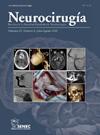c反应蛋白/白蛋白比值与动脉瘤性蛛网膜下腔出血预后的关系:一项系统综述
IF 0.8
4区 医学
Q4 NEUROSCIENCES
引用次数: 0
摘要
c反应蛋白/白蛋白比率(CAR)作为各种疾病严重结局的潜在预测指标正在被研究。我们的研究旨在回顾CAR对动脉瘤性蛛网膜下腔出血(aSAH)患者预后价值的现有证据。我们在PubMed、Embase、Scopus、Web of Science和谷歌Scholar中进行了系统检索,检索截止到2023年4月,并使用NewCastle-Ottawa工具评估了偏倚风险。进行叙事综合,并使用GRADE系统评估证据的确定性。在534篇文章中,有4篇入选。我们发现,较高的CAR水平与3个月时格拉斯哥结局量表的较低评分和较高的住院死亡率有中度相关。但与改良Rankin评分或延迟性脑缺血无显著相关性。尽管证据有限,但CAR可能是预测aSAH患者预后不良的有用工具,但需要更多的前瞻性研究来确定最佳分界点,并将CAR纳入长期预后模型。本文章由计算机程序翻译,如有差异,请以英文原文为准。
Association of the C-reactive protein/albumin ratio with the prognosis of Aneurysmal Subarachnoid Hemorrhage: A systematic review
The C-Reactive Protein/Albumin Ratio (CAR) is being studied as a potential predictor of severe outcomes in various diseases. Our study aimed to review current evidence on the prognostic value of CAR in patients with aneurysmal subarachnoid hemorrhage (aSAH). We conducted a systematic search in PubMed, Embase, Scopus, Web of Science, and Google Scholar up to April 2023 and assessed the risk of bias using the NewCastle-Ottawa tool. A narrative synthesis was performed, and the GRADE system was used to evaluate the certainty of the evidence. Out of 534 articles, 4 were selected. We found that a higher CAR level is moderately associated with a lower score on the Glasgow Outcome Scale at 3 months and a higher incidence of in-hospital mortality. However, no significant association was found with the modified Rankin scale or delayed cerebral ischemia. Although the evidence is limited, CAR could be a useful tool for predicting poor prognosis in aSAH patients, but more prospective studies are needed to determine optimal cut-off points and include CAR in long-term prognostic models.
求助全文
通过发布文献求助,成功后即可免费获取论文全文。
去求助
来源期刊

Neurocirugia
医学-神经科学
CiteScore
1.30
自引率
0.00%
发文量
67
审稿时长
60 days
期刊介绍:
Neurocirugía is the official Journal of the Spanish Society of Neurosurgery (SENEC). It is published every 2 months (6 issues per year). Neurocirugía will consider for publication, original clinical and experimental scientific works associated with neurosurgery and other related neurological sciences.
All manuscripts are submitted for review by experts in the field (peer review) and are carried out anonymously (double blind). The Journal accepts works written in Spanish or English.
 求助内容:
求助内容: 应助结果提醒方式:
应助结果提醒方式:


